A collection of eight thousand volumes from the 15th to the 19th century: such was the amount of books that the noble Buonaccorsi family of Macerata gathered in their library, giving rise to what later became the founding nucleus of the State Library of Macerata, namely the Buonaccorsi Fund. The Ministry of Culture acquired the fund in 1978, many years before the founding of the Macerata institution, with the aim of preventing the Buonaccorsi’s ancient library from being dispersed. The collection of the family, which lived between Potenza Picena in an 18th-century villa on a hill overlooking the sea and Palazzo Buonaccorsi, the splendid stately home in the center of Macerata, reveals the family’s many interests and ties to the society of the time.
Alongside a significant number of Greek and Latin classics, the Buonaccorsi collection contains numerous codices and texts on law, treatises on history, geography and ethnology, medicine and astronomy, and many works on religious subjects. Also notable is the presence of writings documenting interest in agriculture and country life, botany and gardening, dietetics and gastronomy.
One of the prominent books in the Buonaccorsi Fund is the Historia naturale by. C. Pliny second tradocta di lingua latina in fiorentina per Christophoro Landino fiorentino. Impresso in Venesia, per Bartolamio de Zani de Portesio, 1489 adi XII di Septembre. This is the first translation of Pliny’s Naturalis historia by Cristoforo Landino, a leading Florentine humanist, published by Nicolas Jenson in Venice in 1476. The Buonaccorsi Fund edition was published by the types of Bartolomeo Zani (a Brescian who later moved to the lagoon) in 1489. The specimen has a coeval leather-covered wood binding with embossed decorations on the plates and spine, while parts of two metal studs still remain on the back plate, testifying to the presence of ancient clasps used to close the volume. On the verso of the front guard sheet (“guard sheet” means those placed between the cover and the text) and inside the back plate stands out the rampant leopard, ex-libris of the Buonaccorsi family. In some parts of the text, particularly in books XXII - XXVI dealing with botany and medicine, numerous notes, underlinings and manicules (hand-shaped marks used to highlight important passages) appear, testifying to the reader’s special interest in these subjects.
Also noteworthy are the Commentaries of C. Julius Caesar, with copper figures of the lodgings, events of arms, circumuallations of cities, & many other notable things described in them. Made by Andrea Palladio to facilitate to the reader, the cognition ofhistoria, dated 1575. The term commentarius indicates a type of narration situated somewhere between the collection of notes and their elaboration in literary form, and Caesar uses this genre to describe his military campaigns, with probably propagandistic and didactic intentions for the Romans. The text contains Caesar’s De bello Gallico and De bello civili, plus works by other authors in the translation made by Francesco Baldelli, an active translator of Greek and Latin authors as well as a poet in the vernacular and academician of the Umorosi in Bologna under the name “Thirsty.” Palladio then adds a long proem on the Roman militia to the translation. The typographic mark presents Fortuna in the image of a woman without clothes, draped like a sail in the wind. Next to her is Virtue depicted in the guise of a crowned woman with scepter, in a boat bearing the inscription “Regina Virtus.” The date printed on the title page corresponds to 1575, but a manual correction changes it to 1577. The text, mainly in italic type and set within a double linear frame, has figured capilettera and is embellished with 41 of the original 42 plates drawn by Andrea Palladio, who with great summarizing ability, rigorous geometry, clarity of sign and clarity of volume illustrates Caesar’s exploits. This is a first edition that began as a publishing project entrusted to Leonidas and Horace, Palladio’s sons, but completed by Palladio himself due to their deaths in 1572.
It was instead printed in Venice, at Cornelio Arrivabene, in 1584, Il Giuoco de gli scacchi by Rui Lopez, Spagnuolo; nuouamente translated into Italian by m. Gio Domenico Tarsia . The ’author, Lopez de Segura Ruy, outlines a historical background on the origin of chess, explains the rules of the game, which correspond almost completely to those we know, giving for the first time a complete picture of the openings then known. Described and accompanied by illustrations in the text are the characteristics of the chessboard, or board, the meaning of the 32 “vacuous houses” (empty squares) and the “shape, site, path” of the individual pieces. The volume also features numerous woodcut illustrations showing the various pieces and phases of the game. Lopez de Segura Ruy, confessor and adviser to King Philip II of Spain, was one of the first great chess players. He took vows, probably in the Franciscan order. In 1560 in Rome, winning the important game against Leonardo da Cutro, he was recognized by contemporaries as a kind of ante litteram world champion.
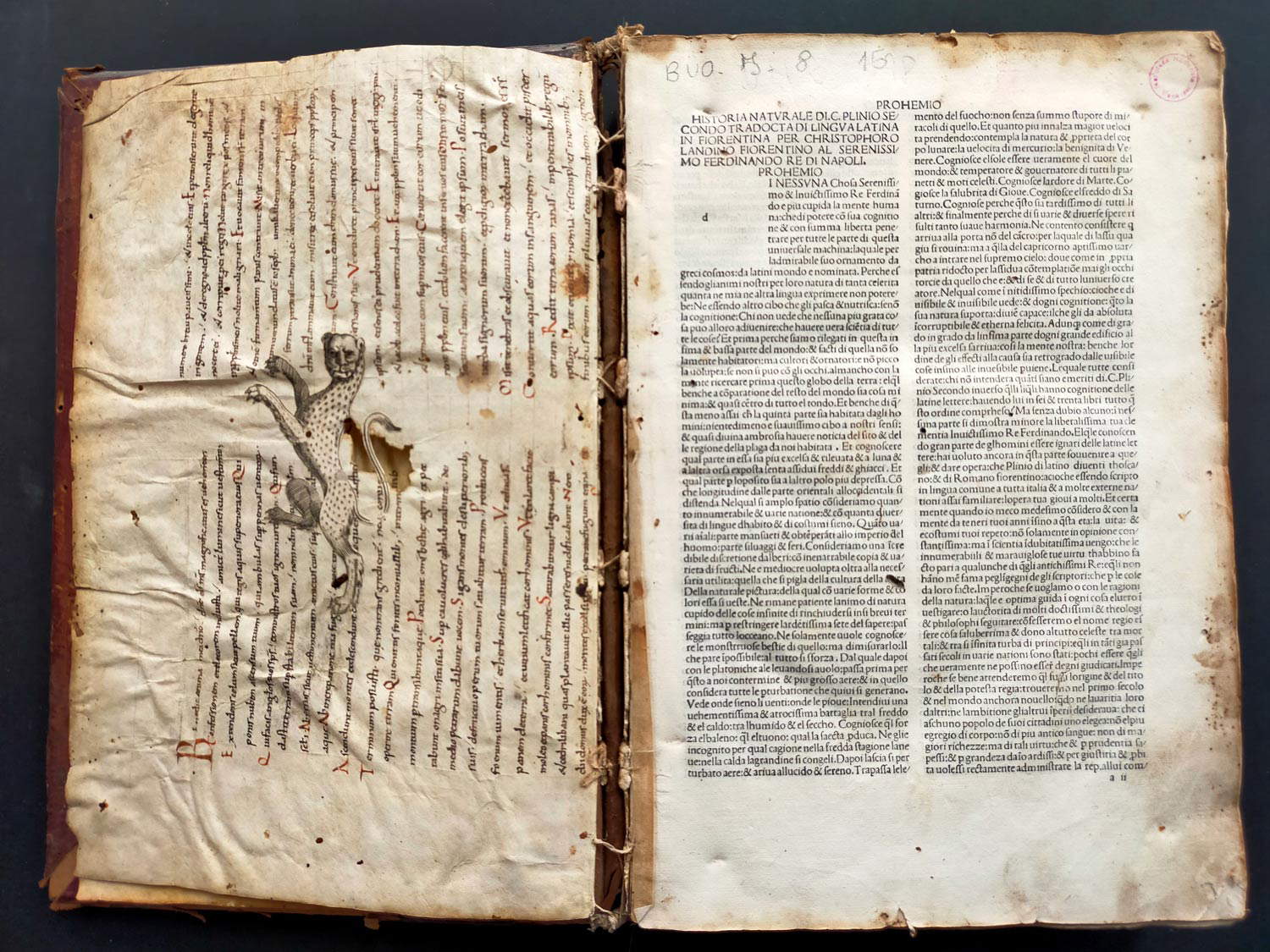
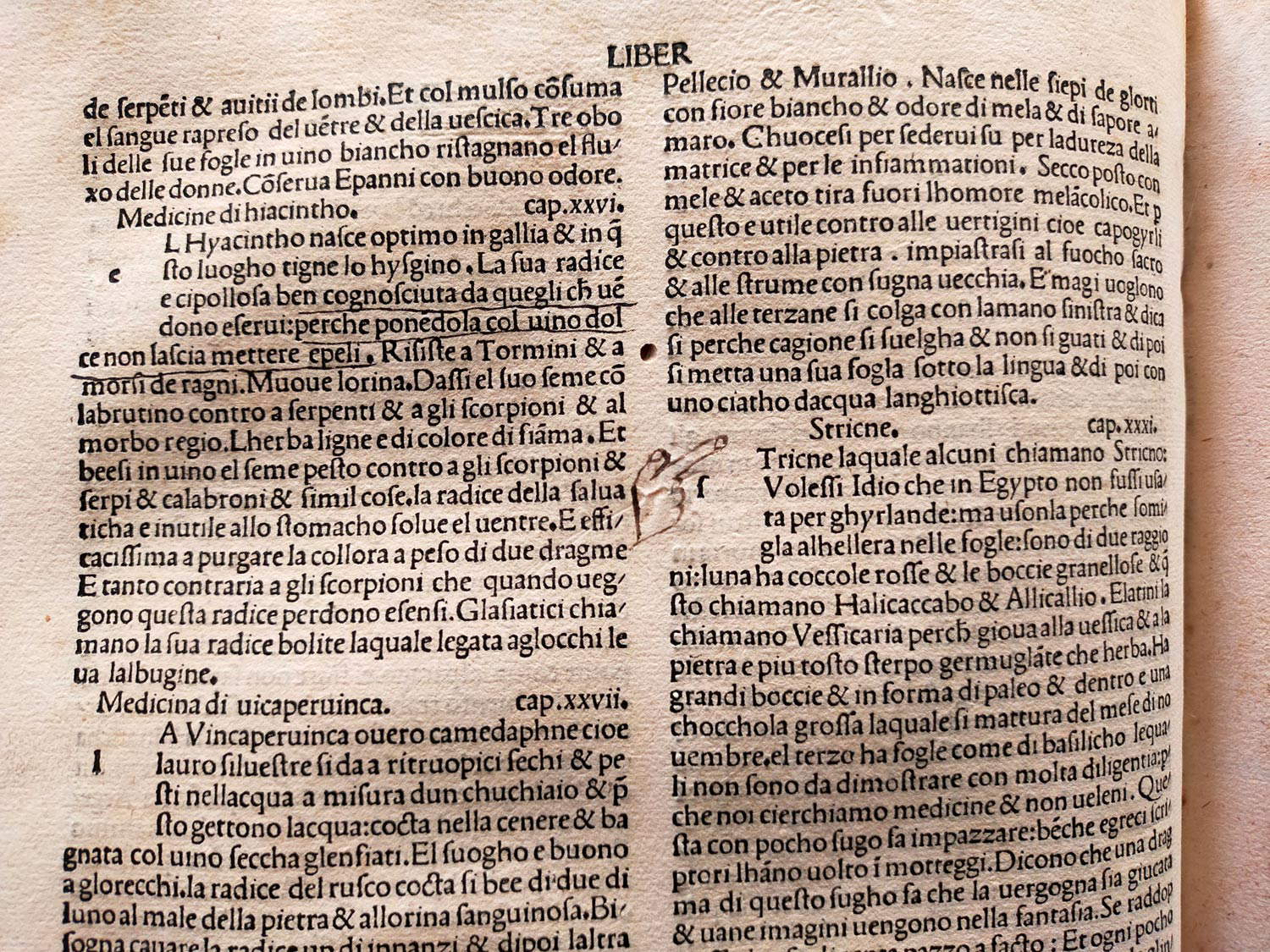
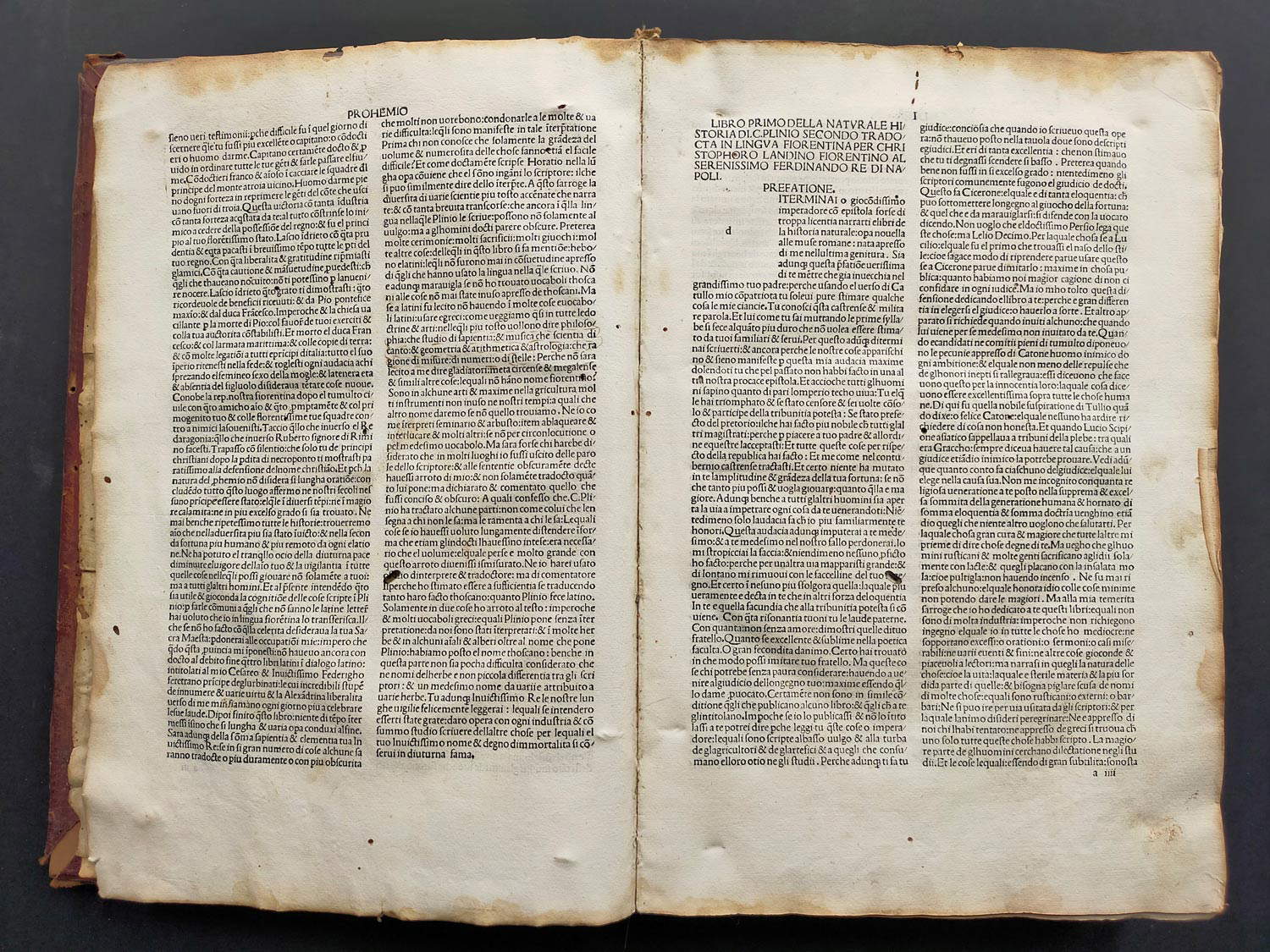
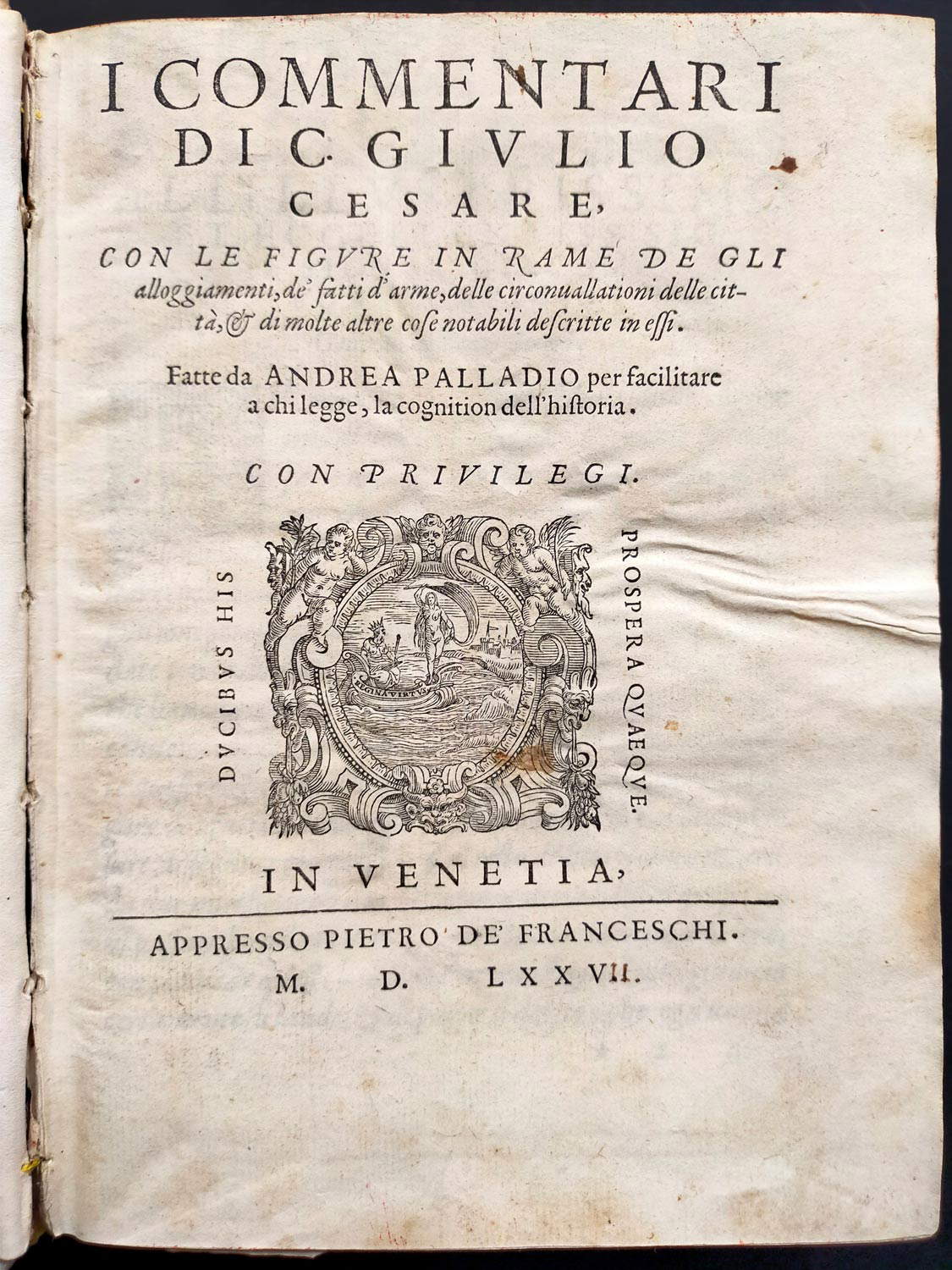
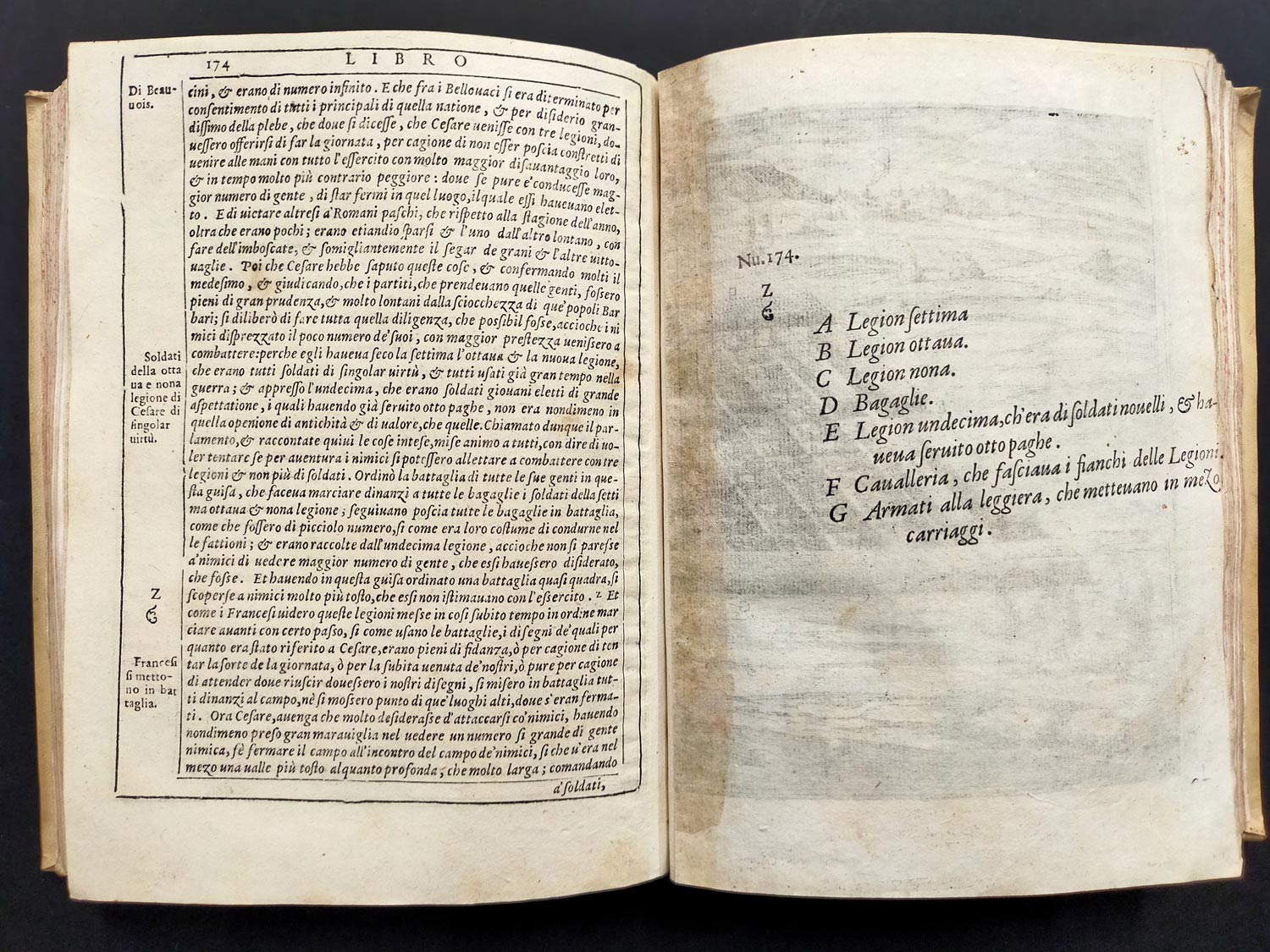 Commentaries of
Commentaries of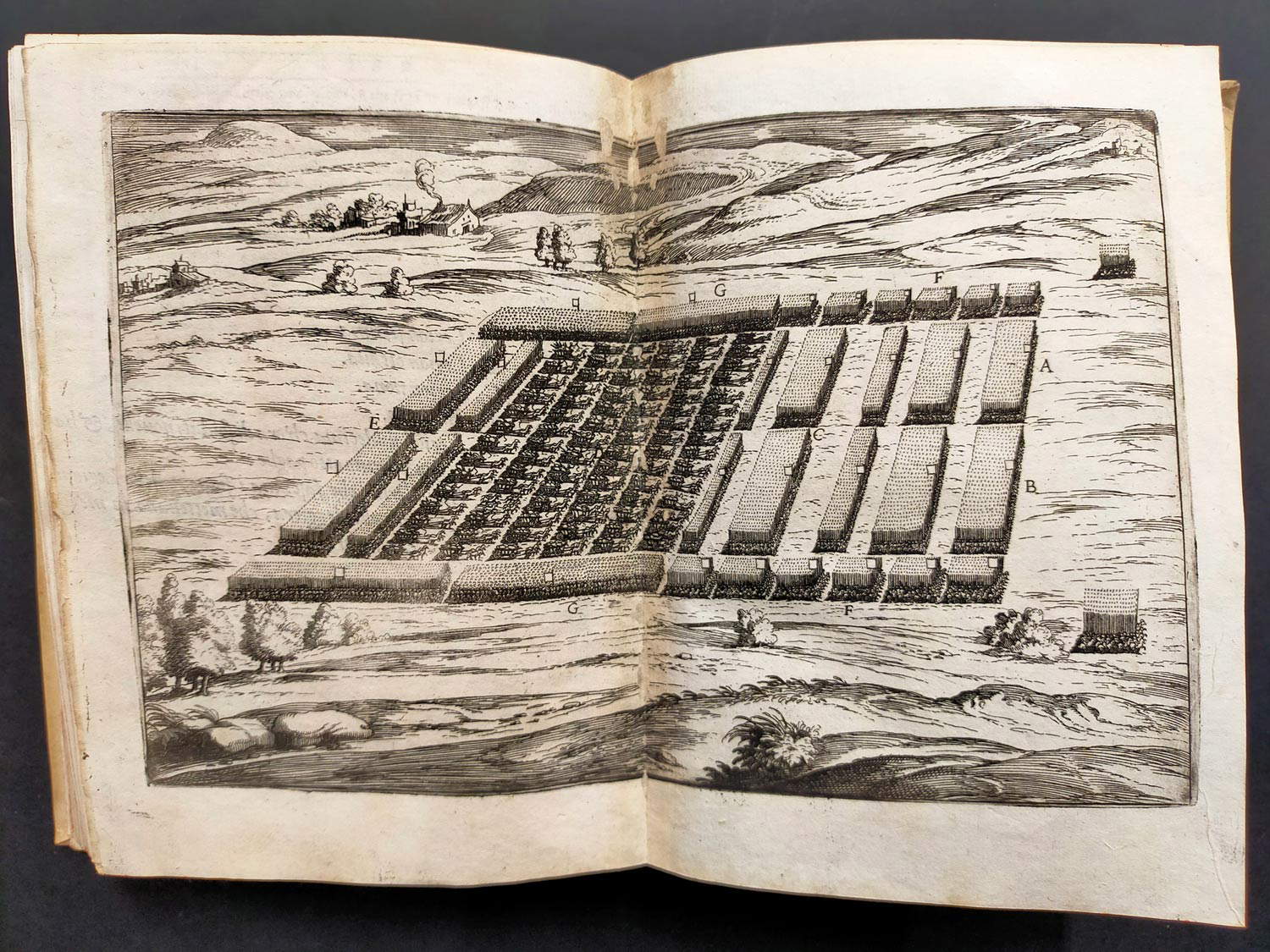
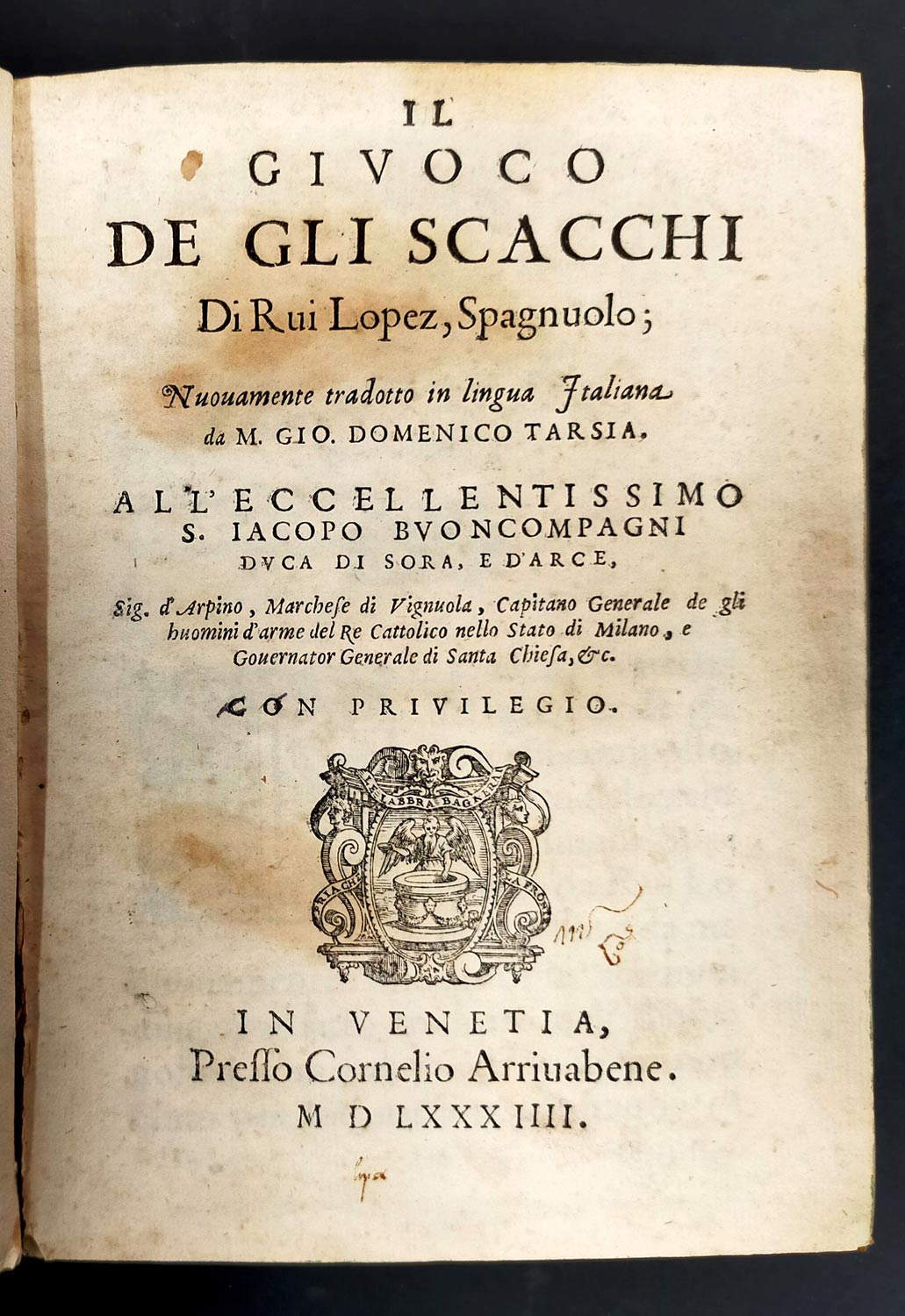

Also dating from the sixteenth century is Trattato dell’ vso et della fabbrica dell’ astrolabe. By F. Egnatio Danti [...] With the addition of the planisphere of Roias, published by Giunti in Florence in 1569. The frontispiece features the six spheres of the Medici coat of arms on a globe surmounted by a crown and the dedication to the most illustrious and reverend Ferdinando, cardinal de’ Medici. The text is illustrated with numerous diagrams and woodcut illustrations depicting scientific measuring instruments, astrolabe models and planispheres. The book’s importance is due to the fact that it is one of the earliest scientific treatises in the Italian language and is the first complete description of the astrolabe printed in Italy, the work of Egnazio Danti of Perugia, a mathematician, cosmographer and architect active at the court of Cosimo I de’ Medici. Danti expounds on the techniques of using the instrument and how to construct it, examining some of the most important specimens of the time and dwelling on the ’use of the astrolabe for numerous types of calculations such as identifying the leap year, the height of the stars and the direction of the winds, and the measurement of heights and depths, comparing the knowledge of the time with earlier theories.
Then there is the Corpus Iuris Civilis, in the valuable sixteenth-century edition glossed by Accursio and published in Lyon in 5 volumes by the Senneton brothers (1549-1550), whose production is characterized by a marked interest in the legal field with the production of large-format, richly decorated volumes of remarkable quality, evidently intended for a cultured elite. Characteristic elements of their editions are thus the frontispieces adorned with historiated frames, such as that of the first volume, which features red and black characters and the brand consisting of the image of the salamander in bright red surrounded by flames, with motto on either side: invidia cedit virtus. It is probably the work of the famous engraver Pierre Vase. The second volume depicts theArbor iurisdictionum, an illustrated schematization of the different degrees of jurisdiction as it is subdivided by medieval commentators, particularly Bartolo da Sassoferato. The panel represents this complex structure through the ramifications of a tree, in which each degree is illustrated by a symbol: for example, the lictor’s fascio is a symbol of the Merum Imperium and an emblem of judicial authority referring to the lictors, officials in the service of the high magistrates who, armed with axes wrapped in bundles of rods, executed corporal and capital punishments. The work is made, as stated on the title page, ad Florentinarum (quae prius Pisanae) prototypon, that is, on the basis of the ancient text preserved first in Pisa and later in Florence (now housed in the Laurentian Library in Florence). The notes or “accursian glosses” that frame the text are the fruit of the great work of interpretation of Justinian law by the School of Bologna (12th-13th cent.) founded by Irnerio and of which Accursio was one of the greatest representatives.
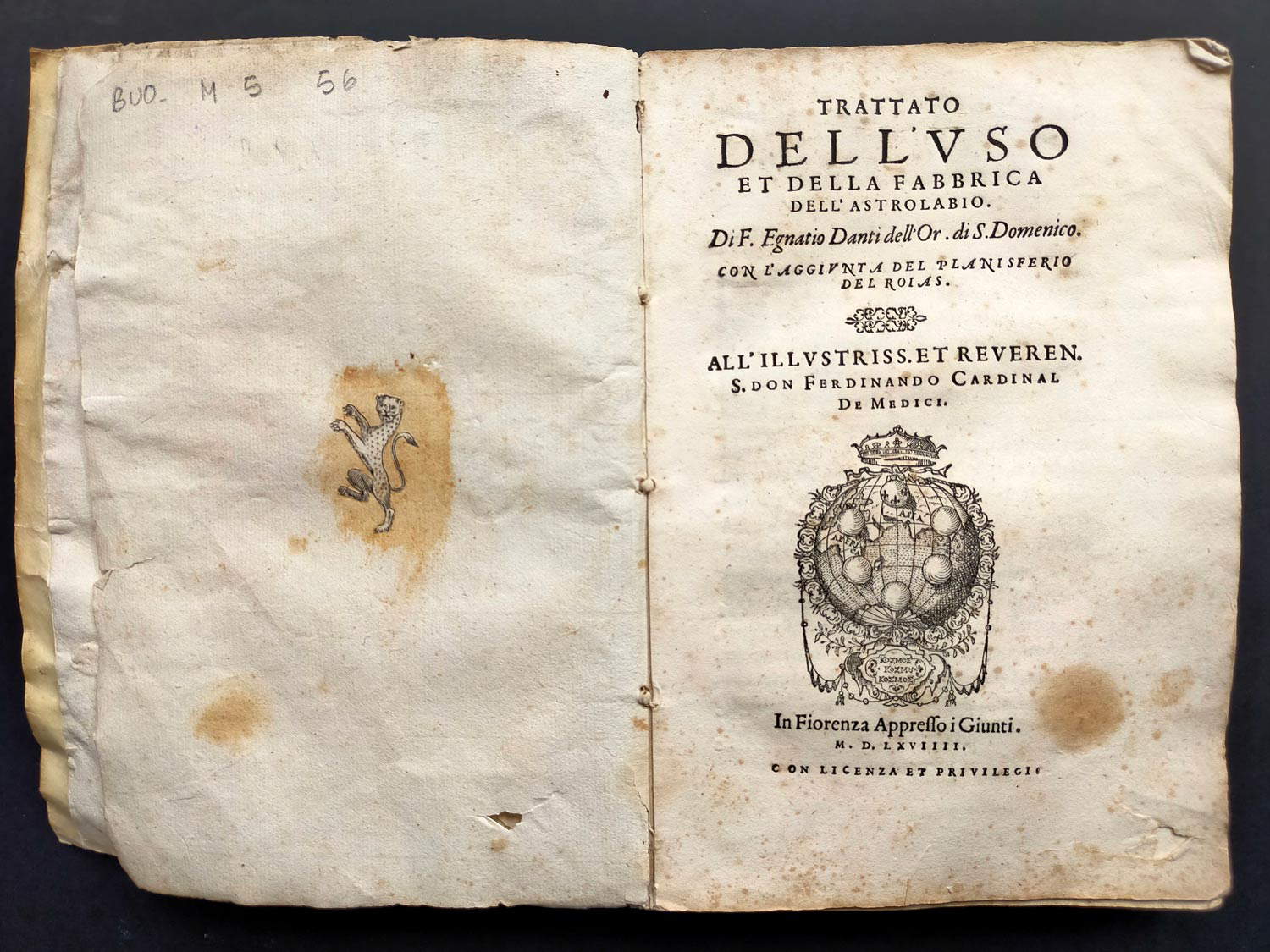


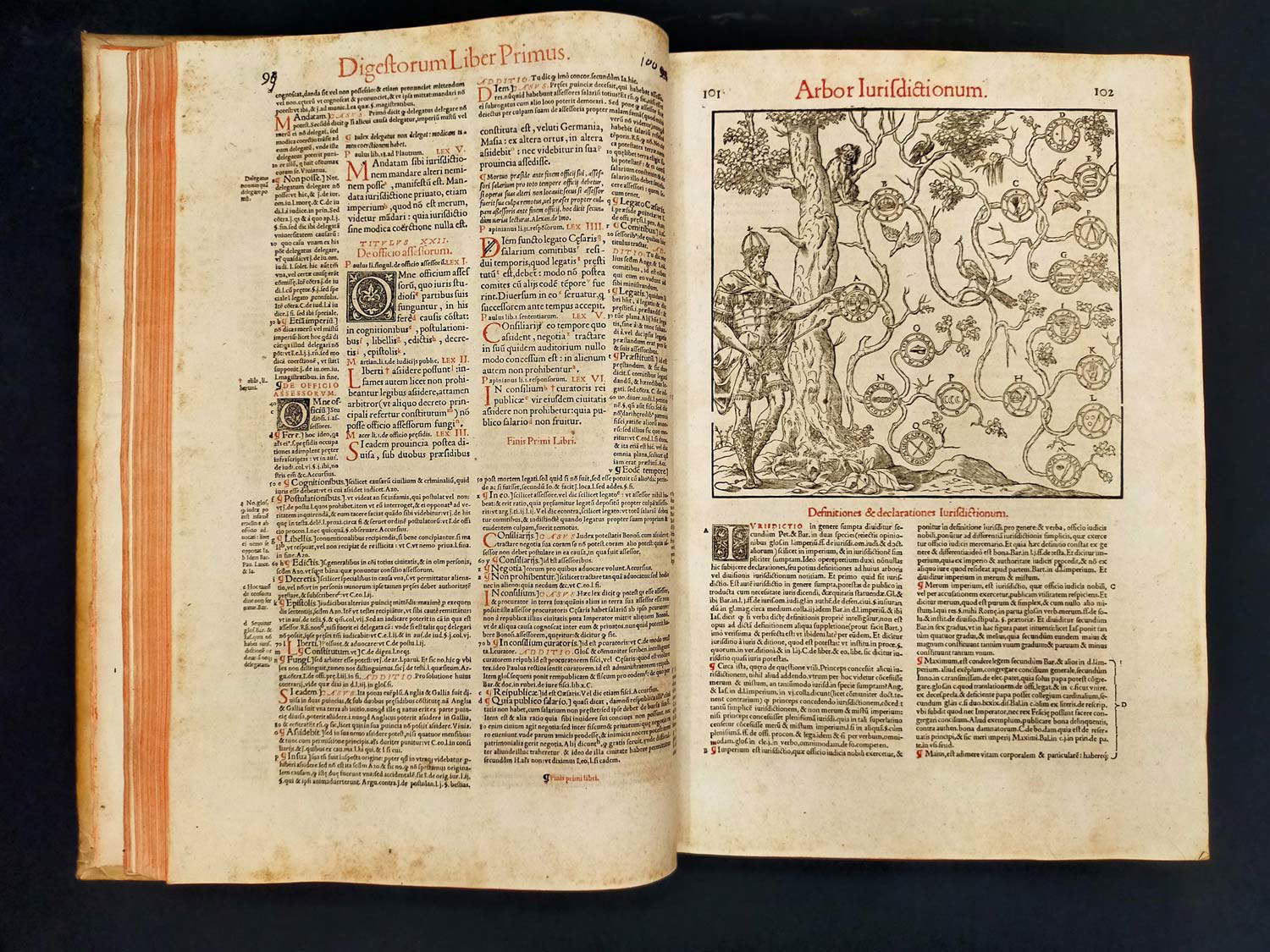
Among the seventeenth-century volumes of notable importance is Flora ouero cultura di fiori by Fr. Gio. Battista Ferrari Sanese della Compagnia di Giesù distinguished in four books and transported from Latin into Italian by Lodovico Aureli Perugino, published in Rome in 1638 by Pierantonio Facciotti. The framed engraved frontispiece bears at the top the arms of Anna Colonna Barberini, to whom the work is dedicated by Claudio Aureli, brother of translator Ludovico Aureli, who died before publication. Remarkable is the volume’s iconographic apparatus, adorned with forty-six engravings depicting garden designs, mythological scenes, flowers, gardening tools and potted arrangements. Important artists of the period, such as Pietro da Cortona, Andrea Sacchi, and Guido Reni, are responsible for the invention of the drawings, while the engravings are the work of Johann Friedrich Greuter and Claude Mellan; one of them is by a woman, Anna Maria Vaiani. This four-book treatise on ornamental flowers and gardening was first published in 1633 in Latin by Giovanni Battista Ferrari, a Jesuit and botanist, for the types of Stefano Paolini. The first book deals with “the apparatus of gardens,” with six valuable plates representing as many garden designs of different geometric shapes; in the second, the characteristics of certain flowers are described, and in the third, the way of planting and feeding them is taught. Finally, in the fourth book, “the use and wonders of flowers are shown”: suggestions ranging from how to compose bunches to rules for building princely floral architecture, complete with directions for choosing vases and baskets to make sumptuous arrangements. There is no shortage of secrets for making plants come out more beautiful, for having different flowers in every weather, and teachings for correcting or adding fragrance to flowers that lack it or for changing their color.
Then to the seventeenth century dates a milestone in the panorama of botany and pharmacological medicine of the previous century: the treatise Dei discorsi di m. Pietro Andrea Matthioli sanese, medico cesareo, et del serenissimo principe Ferdinando arciduca d’Austria ... nelli sei libri di Pedacio Dioscoride anazarbeo, della materia medicinale, printed in Venice at Bartolomeo degli Alberti in 1604. Begun around 1533, the work had at least thirteen editions during his lifetime and numerous translations into French, Bohemian German and Arabic. Pietro Andrea Mattioli was a physician and naturalist; he practiced in Siena, his hometown, then in Rome, Trent and Gorizia. He was appointed caesarean physician to Ferdinand of Habsburg, then to Maximilian I. Having achieved affluence with the medical profession, he devoted himself to the study of botany. The work is a translation from the Greek of De materia medica by Dioscorides Pedacius, a botanical physician who lived in the first century A.D., supplemented with anecdotes and news related to folk tradition and with the addition of descriptions of the medicinal virtues of hundreds of new plants. Some species were still unknown at the time as they were imported from the East and the Americas, while others were directly herbalized by Mattioli during his research in Val di Non and Monte Baldo.
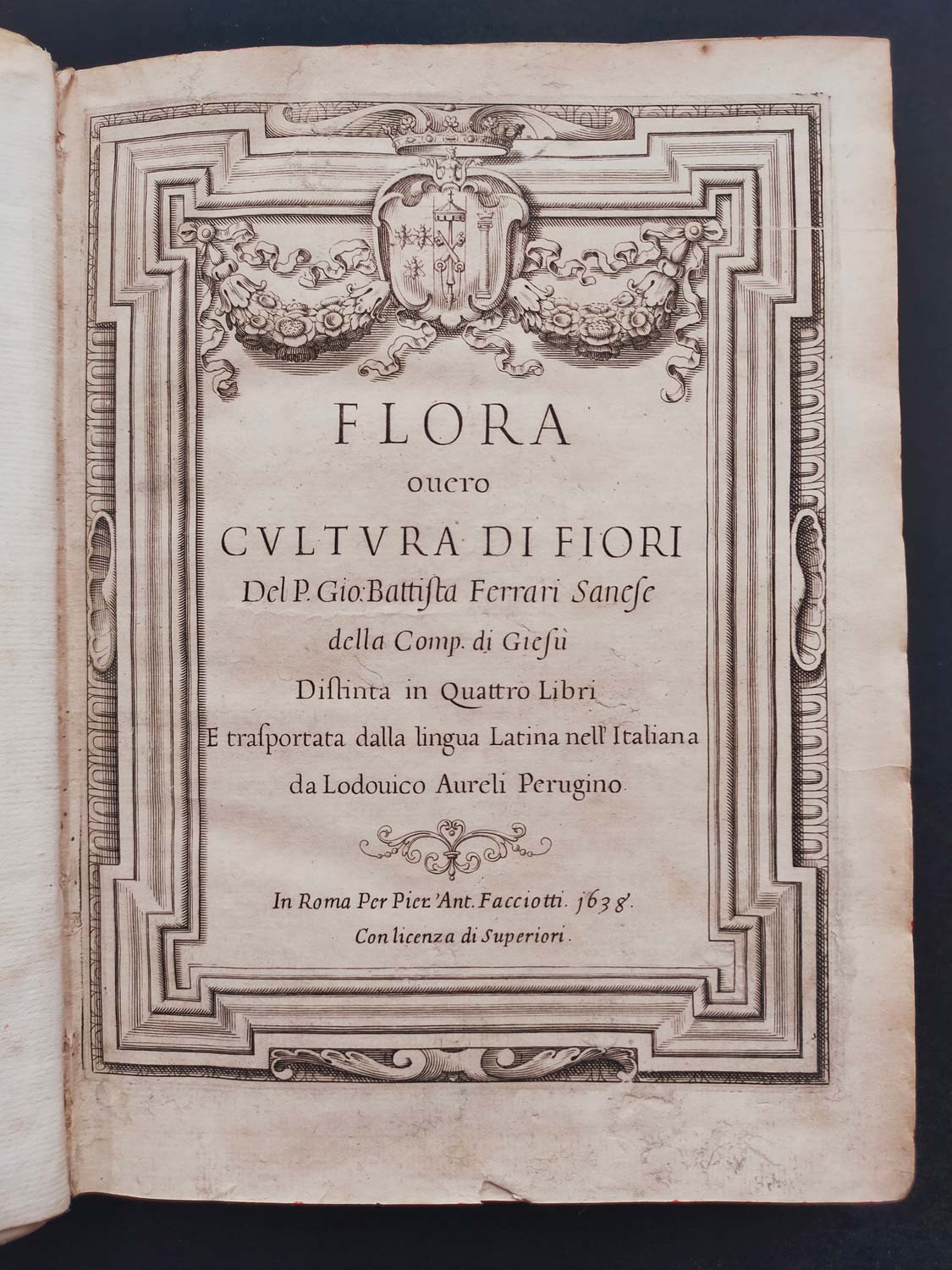 Flora ouero
Flora ouero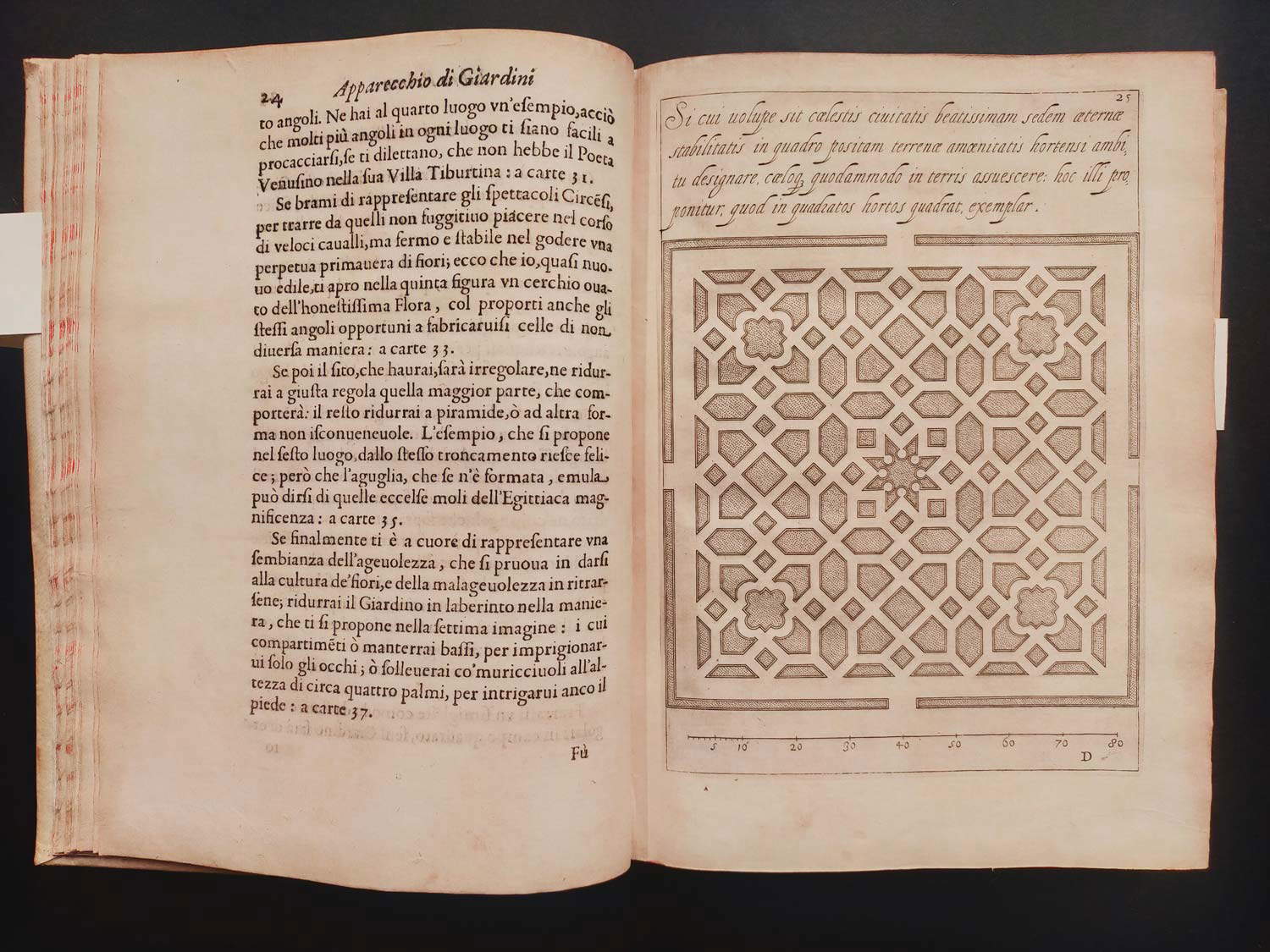 Flora ouero culture of flowers of
Flora ouero culture of flowers of Flora ouero culture of flowers of Fr. Gio. Battista
Flora ouero culture of flowers of Fr. Gio. Battista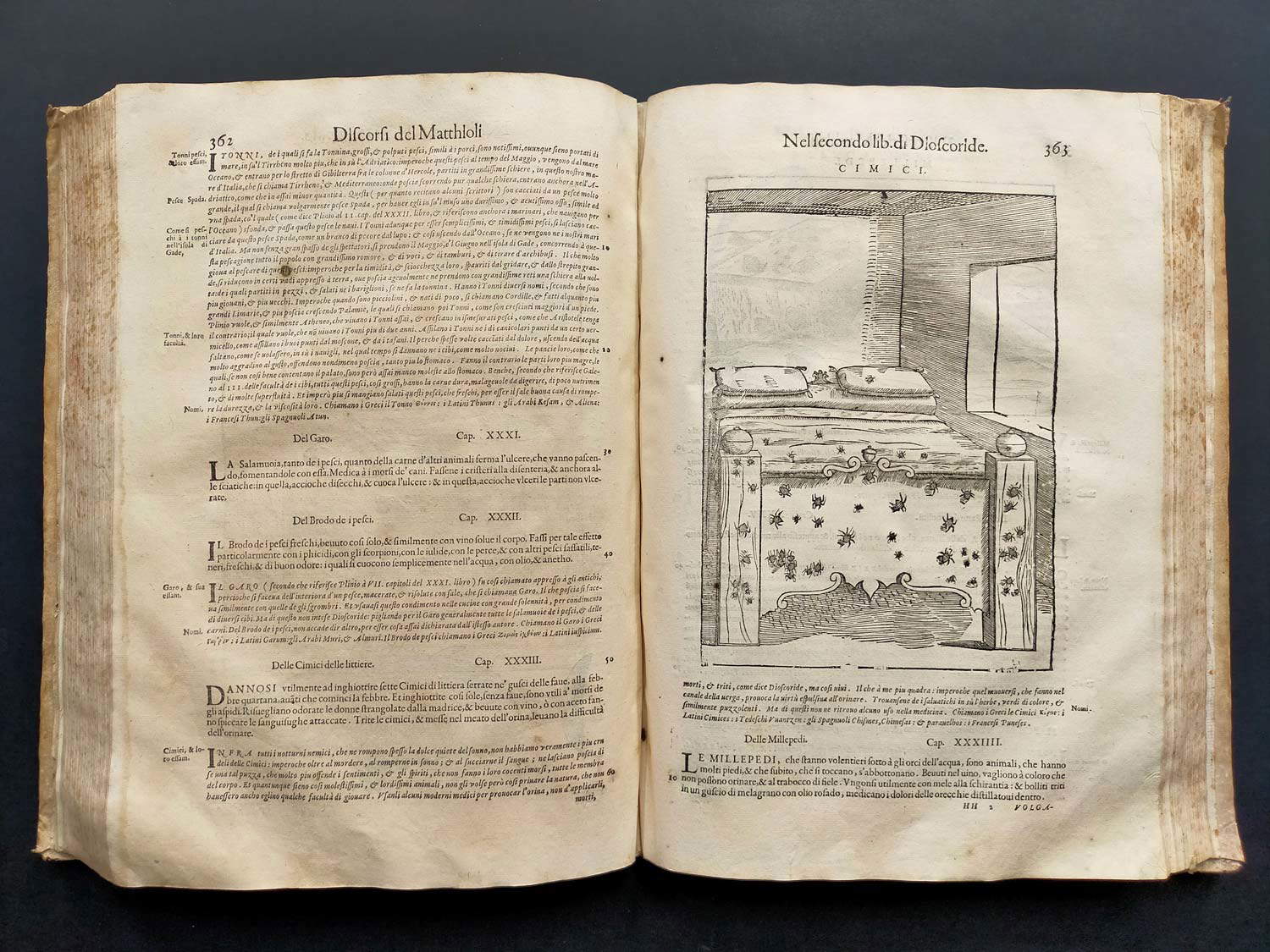
 Dei discorsi di m.
Dei discorsi di m.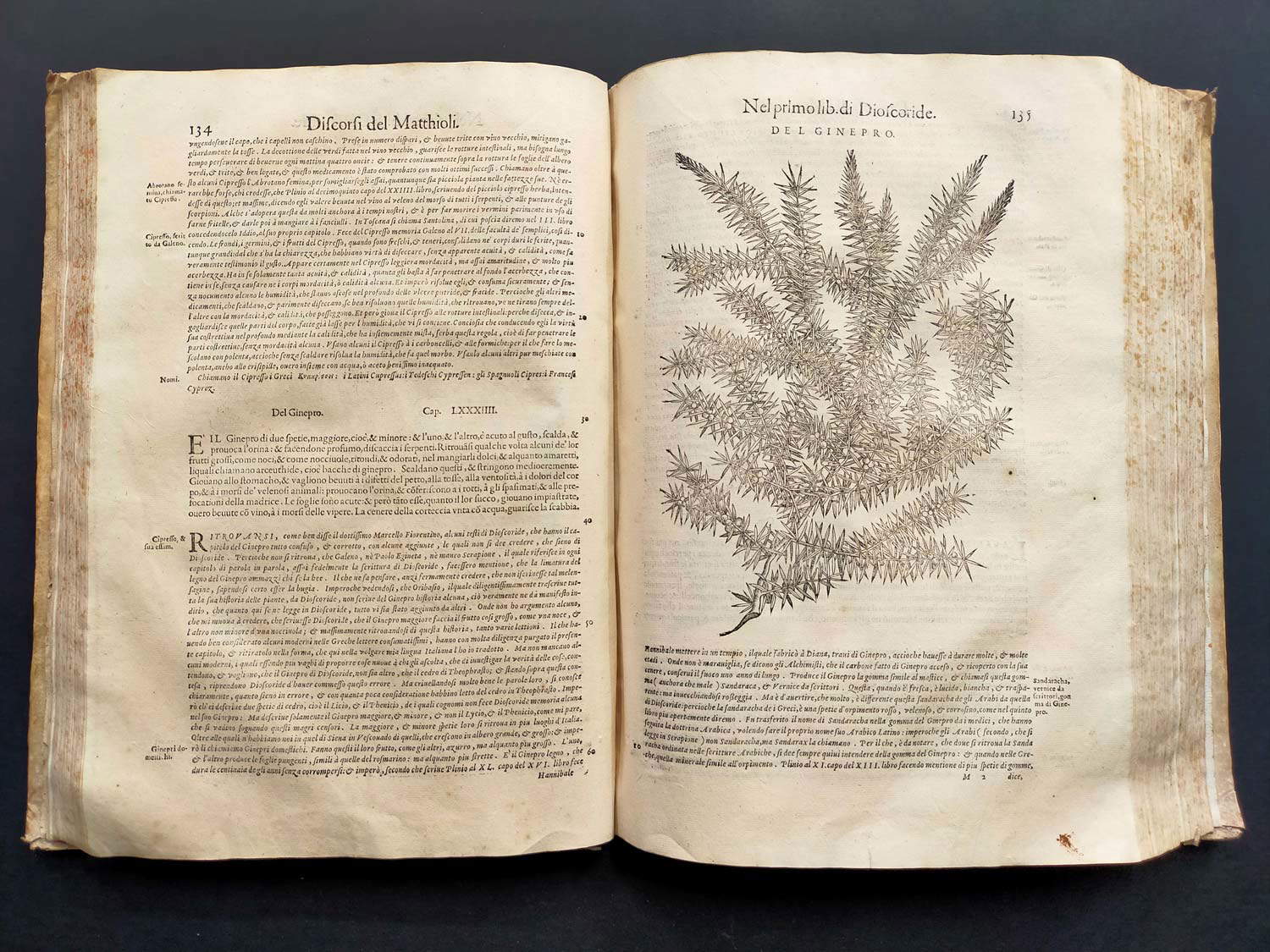 Dei discorsi di m.
Dei discorsi di m.Finally, two important eighteenth-century volumes. One begins with theAtlas minor præcipua orbis terrarum imperia, regna et provincias, printed in Augsburg at Matthäus Seutter in about 1744. Matthäus Seutter was one of the most important and prolific German map publishers of the 18th century, awarded the title of Imperial Geographer by German Emperor Charles VI. The atlas opens with a splendid allegorical frontispiece, copper-engraved and hand-colored, introducing the contents of the work. The treatise then begins with a table of terrestrial and celestial planispheres, which at the four corners shows summary representations of the solar system according to the four different theories of Ptolemy, Copernicus, Tycho Brahe and Descartes. This is followed by maps of Europe, Asia, Africa, and the Americas, which at the date of publication were not yet properly mapped: for California is outlined as a large island, and the Pacific coast of the United States is not complete. The atlas consists of 67 geographical plates, all perfectly preserved and still vividly colored, arranged in double-page spreads. Each plate then carries a rich cartouche with the title, the engraver’s name and various allegorical scenes. Occasionally, glimpses of cities are depicted in the corners, with the most representative architectural elements. The volume documents with numerous descriptive plans full of place names the geo-political situation of individual states, such as the Savoy Duchy or the Church State. Each table shows geographical coordinates and often the different scales of reduction then in use are indicated: Germana, Gallica and Italica.
The second important eighteenth-century volume is the treatise Animali quadrupedi dal naturale dissegnati, incisi, e miniati con i loro ver colori by Innocente Alessandri, and Pietro Scattaglia, printed in Venice by the publisher Ponte di Rialto in 1771-1775. A work in four volumes and in the large in-folio format, it is one of the most valuable zoological treatises among those published in Europe in the 18th century. In fact, it is the only edition with color engravings by the Venetian artists Innocente Alessandri and Pietro Scattaglia, who were active on the Rialto Bridge at the time: 200 hand-colored engravings depicting well-known and exotic animals. Completing the work is the Descrizioni degli animali [...] in Venezia, nella Stamperia di Carlo Palese, 1771-1775, in four volumes and in the same format, describing the animals depicted, the texts of which are attributed to Lodovico Leschi. Both works take as their model the Histoire naturelle, générale et particulière, avec la description du Cabinet du Roi written by Georges-Luois Leclerc, Count of Buffon, and published between 1749 and 1789, from which the texts and images, often reproduced in counterpart, are taken. Innocente Alessandri and Pietro Scattaglia, pupils of Francesco Bartolozzi, owned the Calcografia Magna in the lagoon city, and together they produced several series. The animals are depicted in a barely hinted habitat, enhanced by flowers and plant elements in the center of the sheet, and accomplice to the lack of a frame enclosing the drawing the image seems as if suspended. Unlike other editions in which animals are always depicted motionless, those engraved by Alessandri and Scattaglia introduce, thanks to the preparatory drawings by painter Pietro Novelli, more movement and elements of dynamism. It is likely, moreover, that the “mapscà” (a macaque) was portrayed from life, since in those years in Venice the Lithuanian prince Charles Stanislaus Radzwill owned a specimen. That the lion was actually portrayed from life, however, we are informed by Table I, dedicated to Lunardo Venier, possessor of the animal.
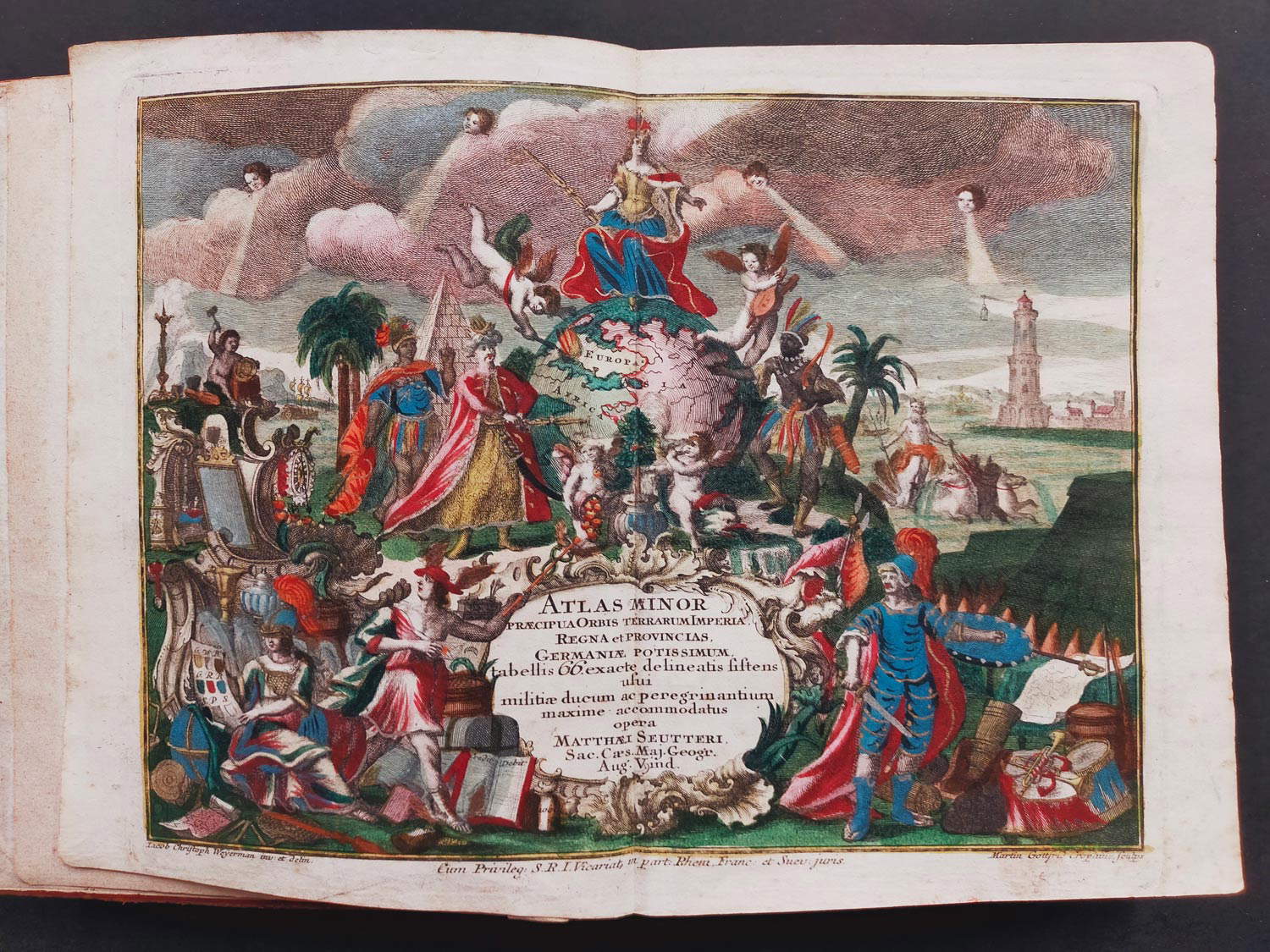
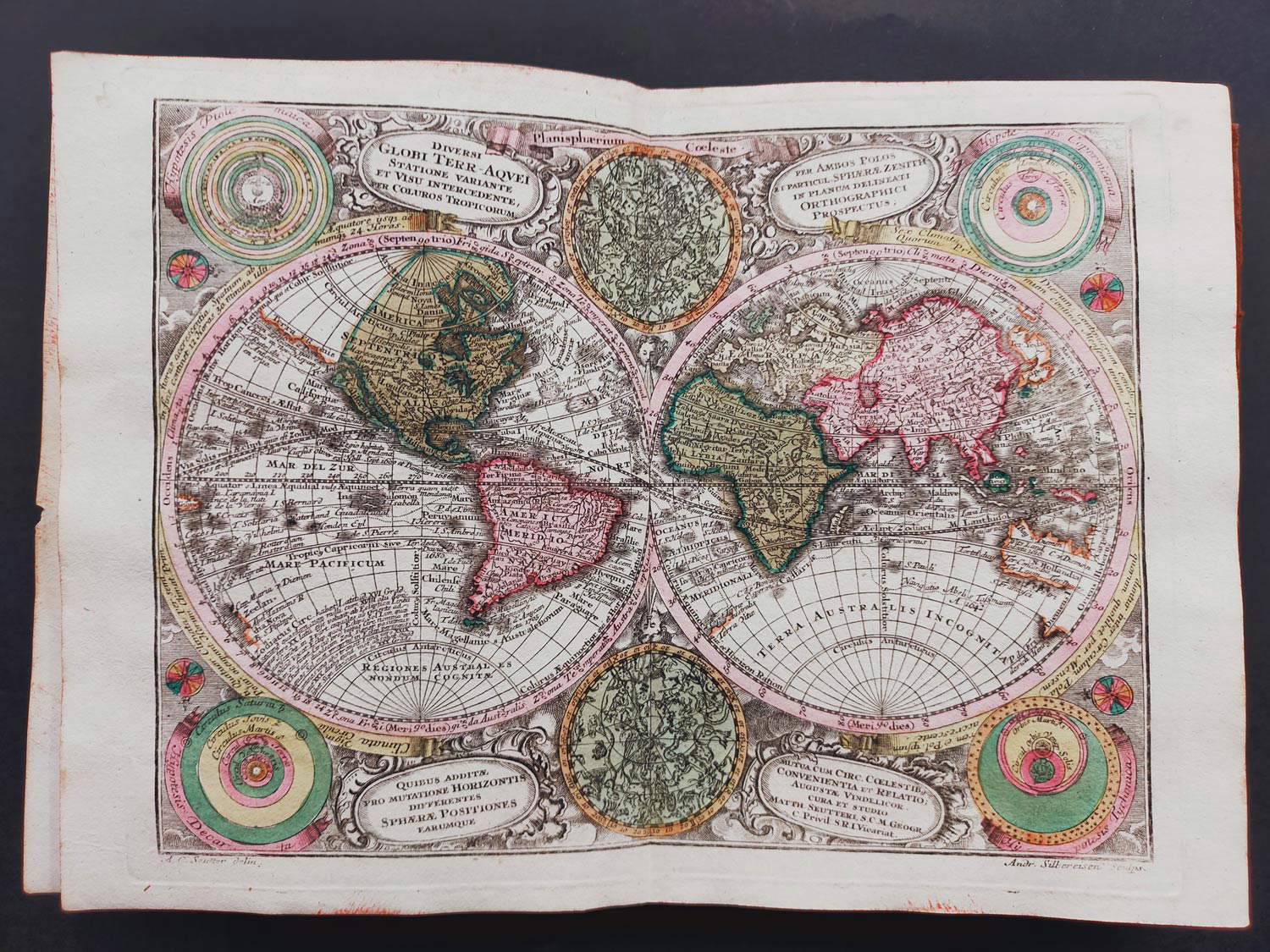
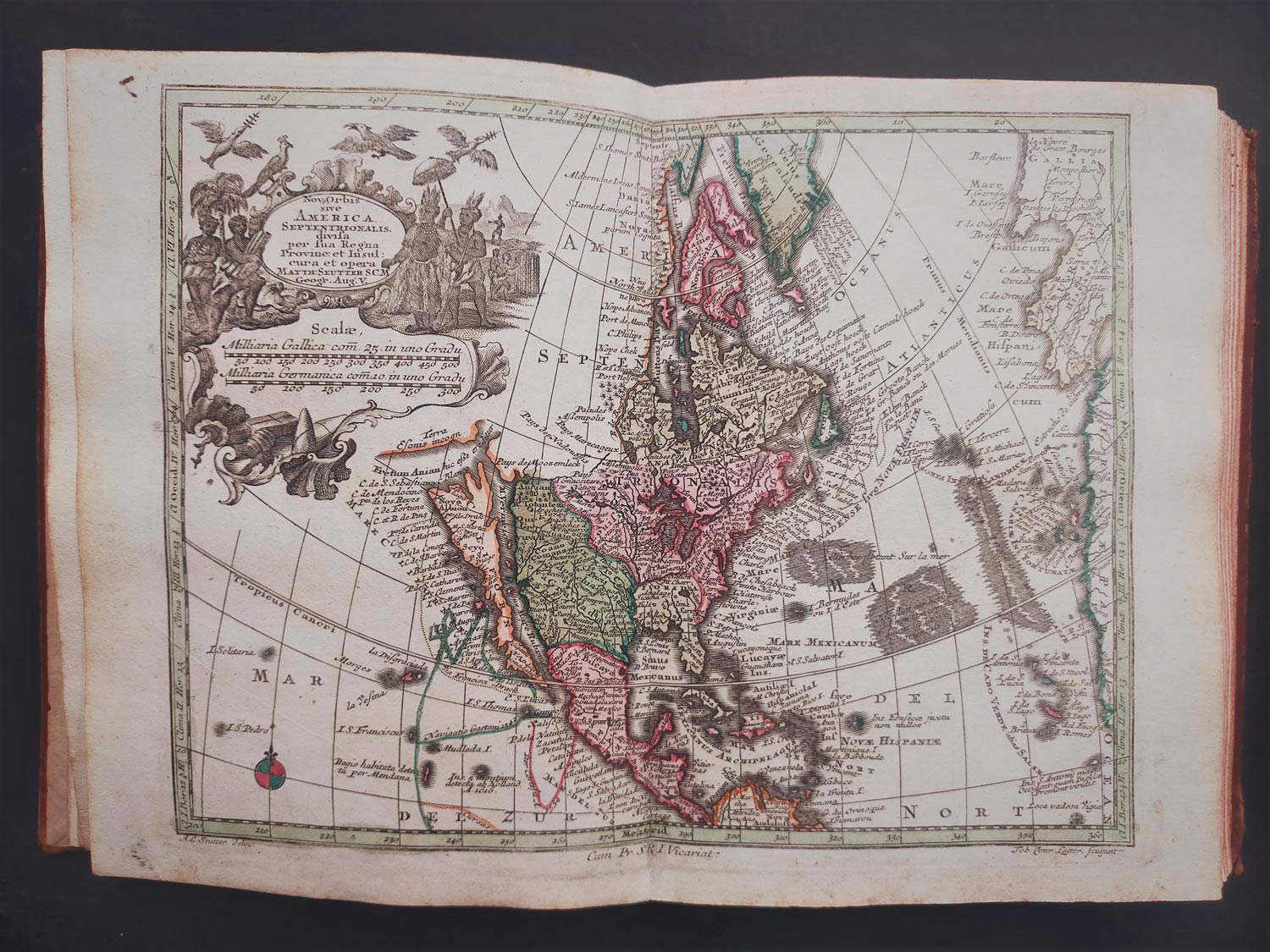 Atlas minor
Atlas minor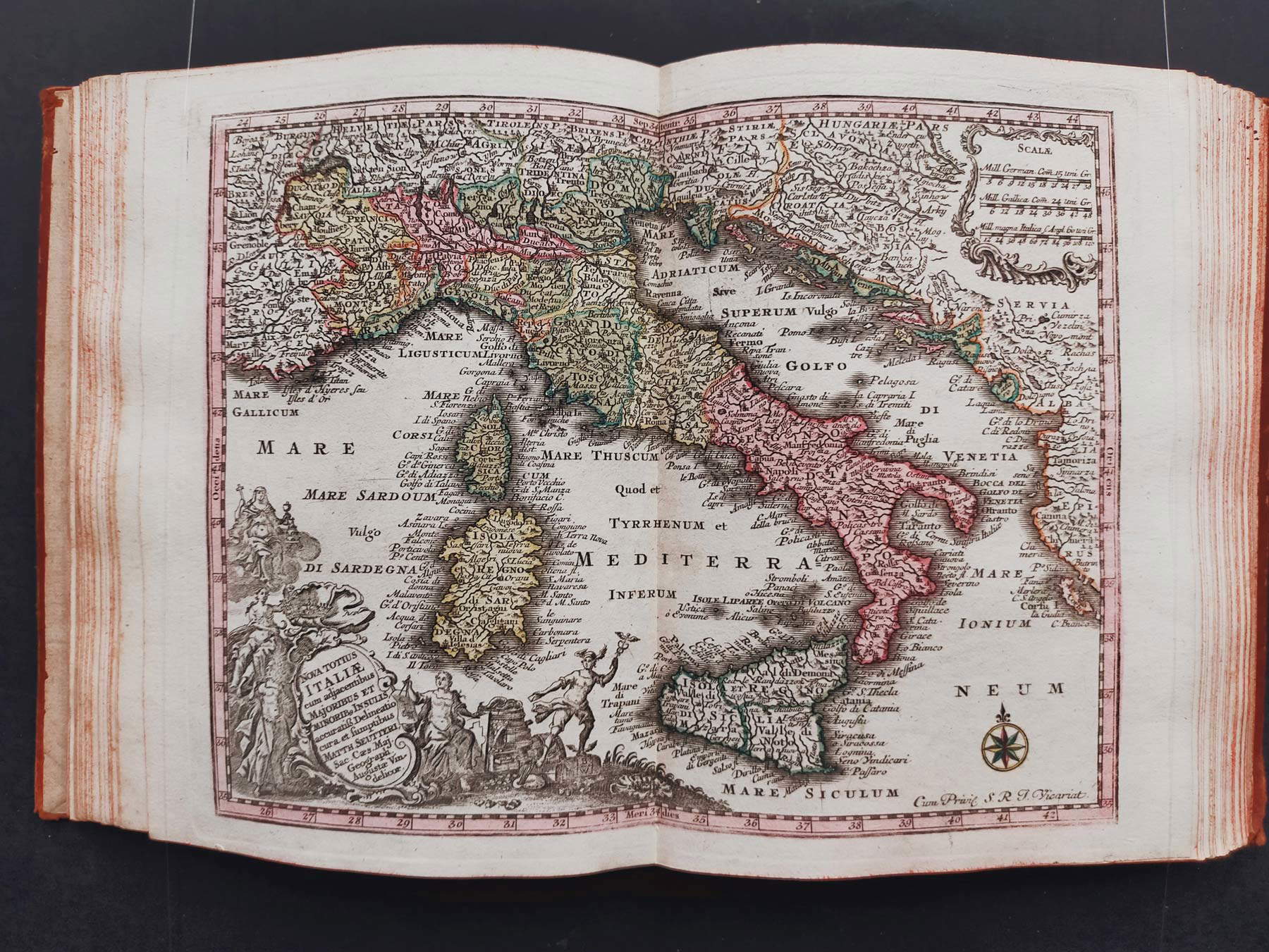 Atlas minor
Atlas minor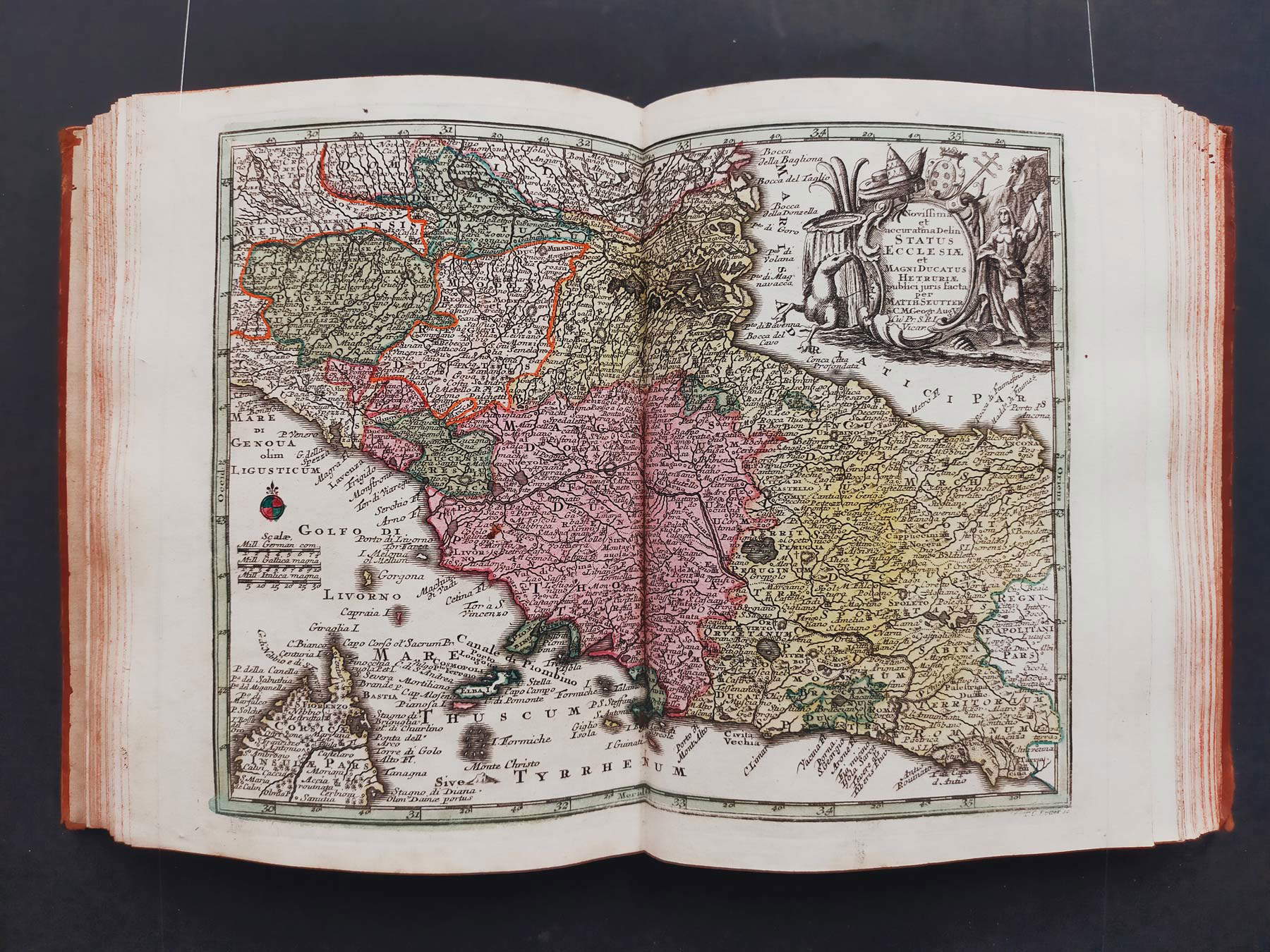 Atlas
Atlas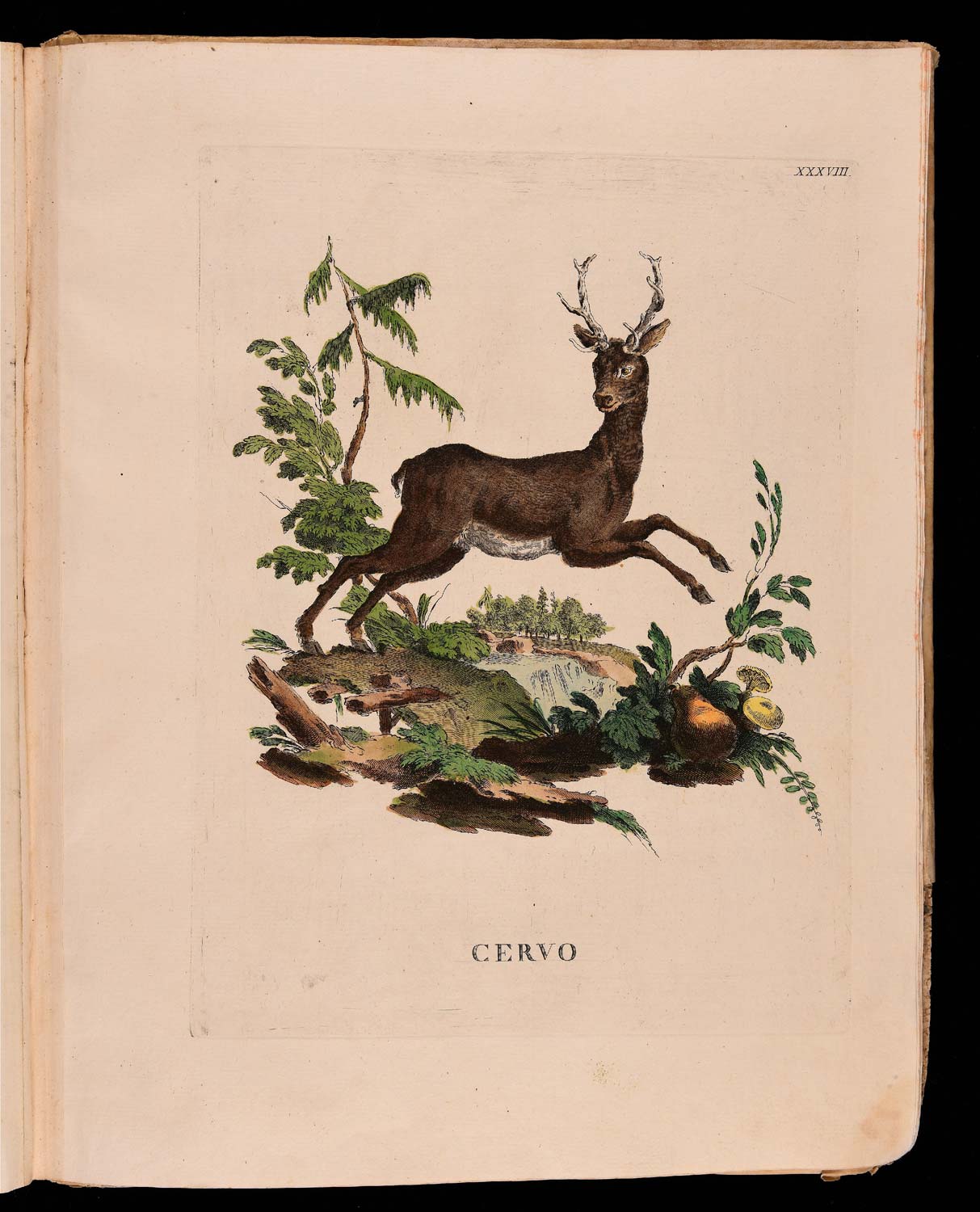
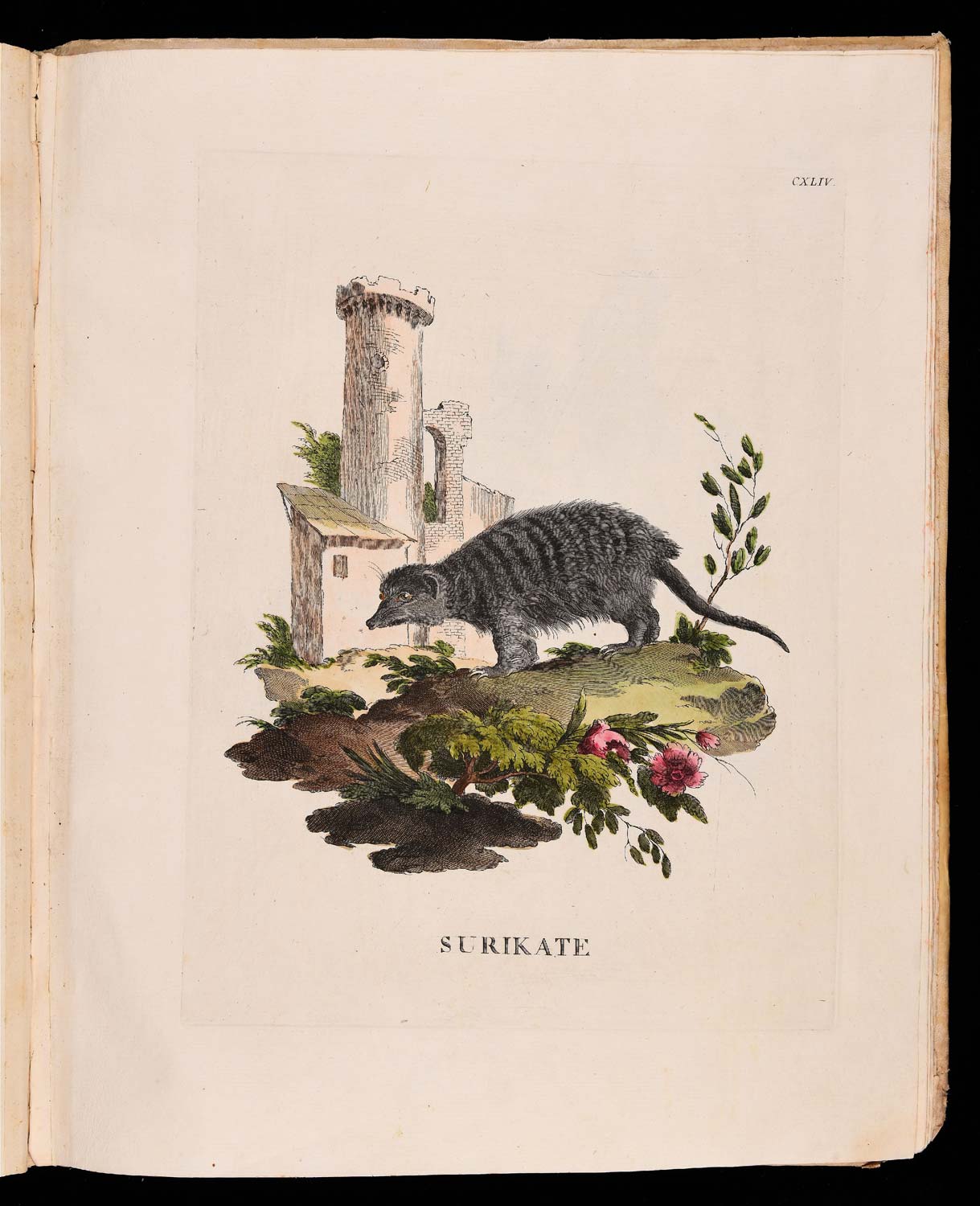 Quadruped animals from the natural dissected
Quadruped animals from the natural dissected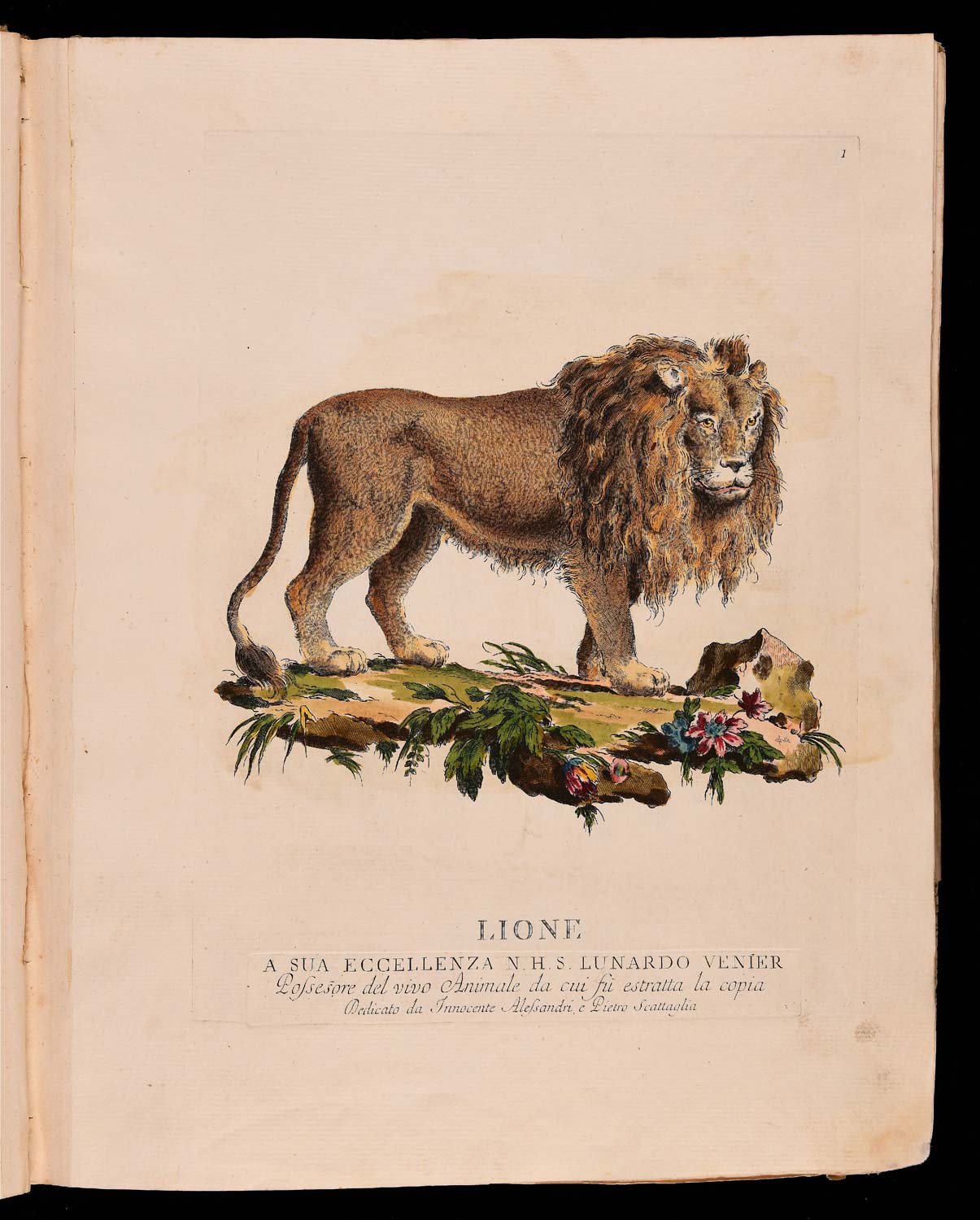 Quadrupedal animals from the natural drawn
Quadrupedal animals from the natural drawn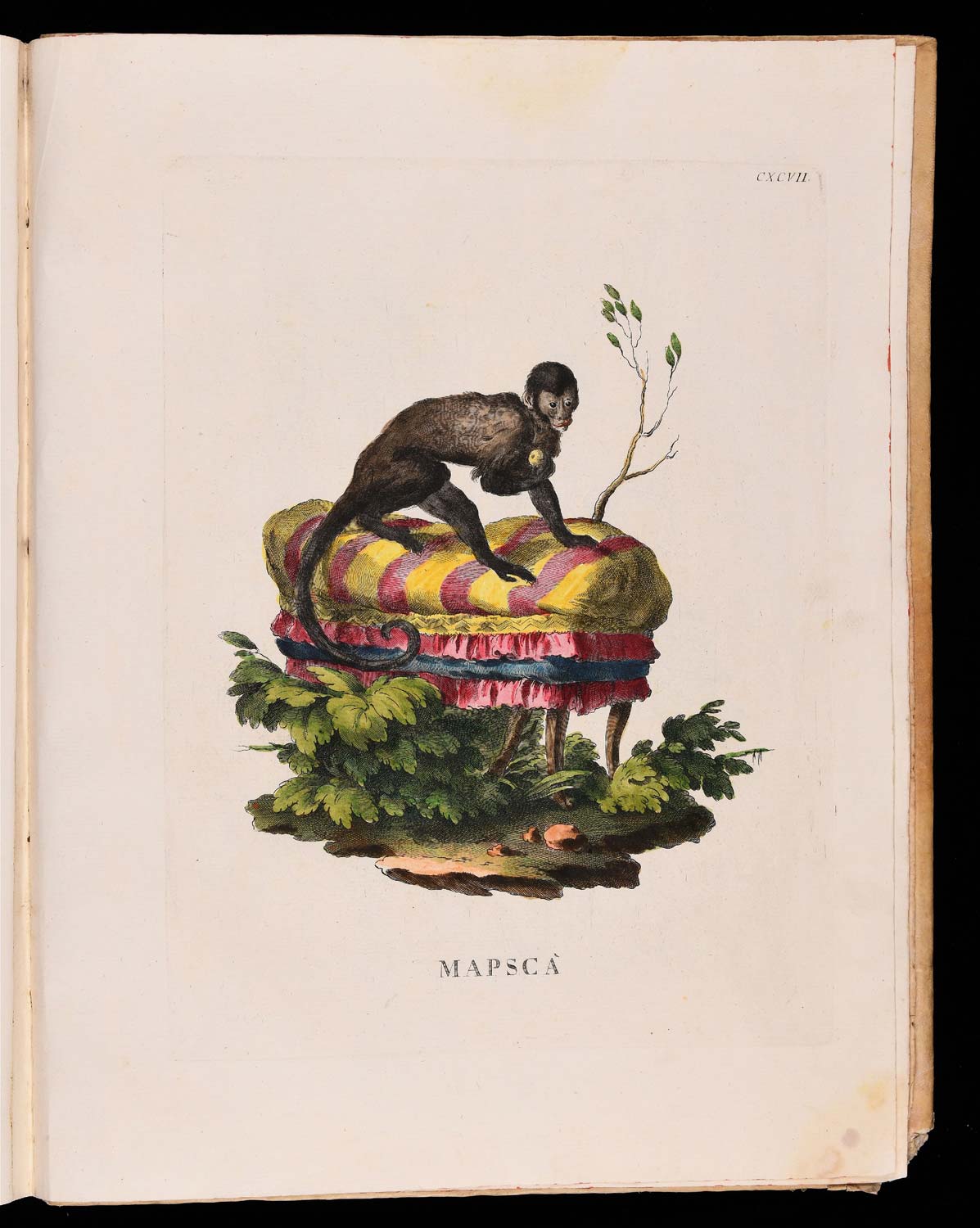 Quadruped animals from the natural drawn, engraved, and
Quadruped animals from the natural drawn, engraved, and Quadruped animals from the natural drawn, engraved, and
Quadruped animals from the natural drawn, engraved, and Quadruped animals from the natural drawn, engraved, and
Quadruped animals from the natural drawn, engraved, andThe State Library of Macerata was established in 1987 as a detached section of the National Library of Naples, from which it became autonomous in 2002, officially beginning its activities on February 11, 1992. Its creation was in response to the joint effort of the then Ministry of Cultural Heritage and the University of Macerata, which, having acquired in the late 1970s the complex of seventeenth-century origins referring to the Monastery of Santa Chiara located in the city center, provided for its renovation and allocated a portion of it to the library. During the Napoleonic suppressions of ecclesiastical institutes, the property was forfeited to the state property and underwent adaptations to accommodate the city courthouse and prison. The subsequent transfer to the University of Macerata finally decreed its function as a cultural center of primary importance.
The current library holdings consist of more than 95,000 volumes, including two incunabula and 590 cinquecentine. Preponderant is the endowment of works of current publishing, owing to the Library’s connotation of a generalist character, aimed at a wide and heterogeneous public. What has been established over a thirty-year period is in fact a library open to all cognitive and informational needs, with particular attention to works on literary and artistic subjects. The two ancient funds stand out for their value and interest: the Buonaccorsi fund and the Castelbarco Albani fund, the latter a portion of the larger library of the Urbino Albani family (later Castelbarco Albani from the 19th century), today fragmented into several nuclei preserved at different institutions. The 1,400 volumes that make up the fund kept in the State Library of Macerata well represent the bond that gives unity to the collection, linked to the refined bibliophile taste and cultural interests of the various members of the family, one above all the pontiff Clement XI. Of more recent formation, but significant for its specificity, is the ancient Library of the Court of Macerata which includes about 1,700 volumes, journals and pamphlets of a legal nature, starting from the 18th century. Also worth highlighting for its extraordinary artistic and documentary value is the Balelli Photographic Archive, the result of the work of a dynasty of photographers active in Macerata from 1851 to 1972. The archive, composed of more than 11,000 original pieces including negatives and positives, contains images of the territory from the professional activity of Alfonso and Carlo Balelli from the early 1900s to the 1960s and constitutes a valuable and inexhaustible source for studies on the political, economic, social, cultural and artistic life of Macerata and its province. Added to this is the so-called World War I fund with a thousand precious black-and-white positives taken on the Italian-Austrian front by Carlo Balelli as the first operator of the Third Army’s photographic squad and the Fourth Army’s mountain telephotographic squad, documenting life in the trenches and the crucial phases of the war.
Finally, among the special features of the State Library of Macerata is a rich collection of ex-libris, donated by the artist, Macerata-born Maria Elisa Leboroni, who has been devoted to the ancient technique of woodcuts for over fifty years. The Leboroni collection consists of more than twelve thousand examples, the work of important Italian and foreign artists. A unicum of great quality, due to the extraordinary richness of the authors present but also to the artistic sensitivity and specific expertise of the author of the collection, complemented by a relevant nucleus of Italian and foreign publications on the various aspects revolving around the world of ex-libris.
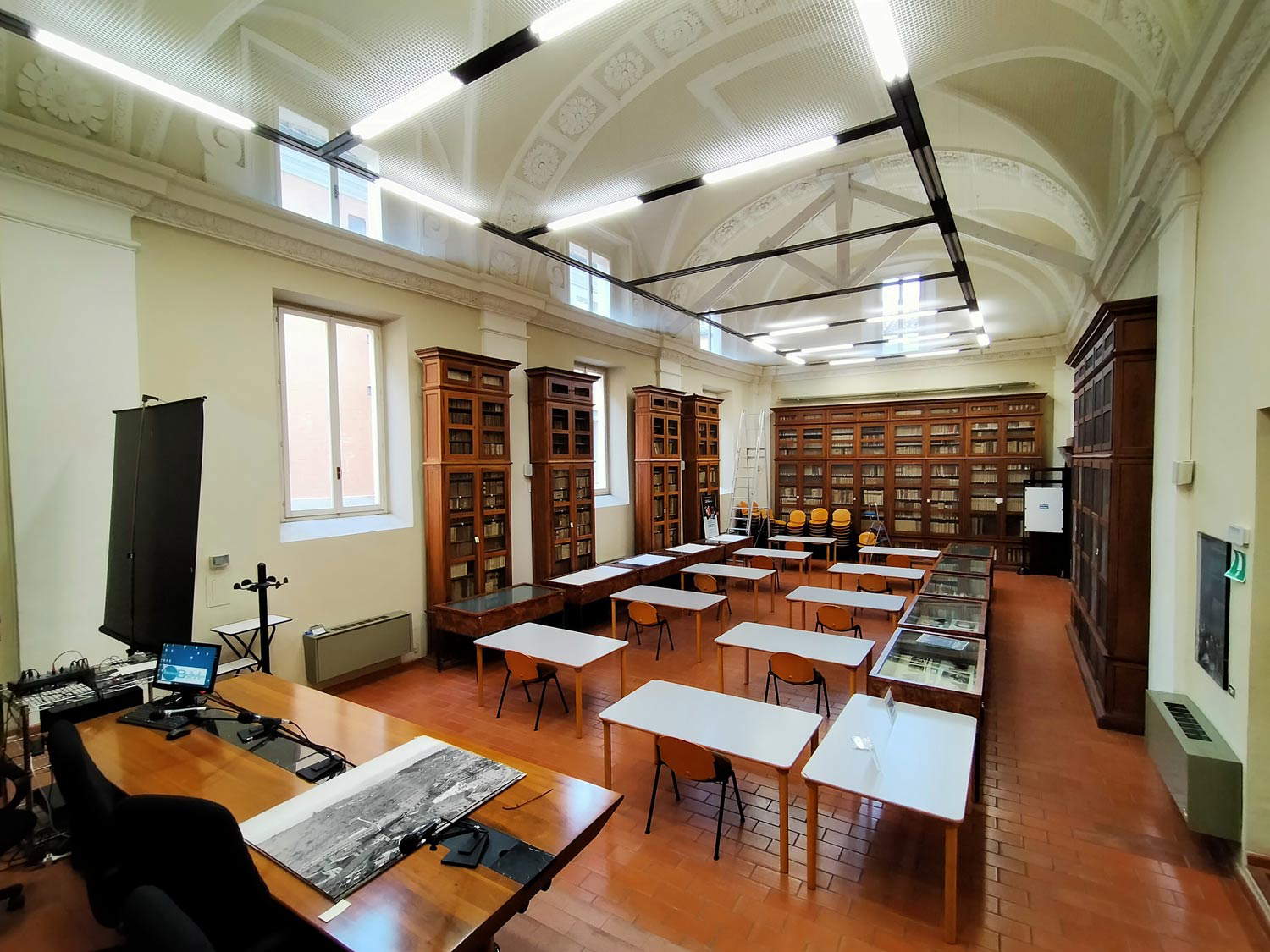
Warning: the translation into English of the original Italian article was created using automatic tools. We undertake to review all articles, but we do not guarantee the total absence of inaccuracies in the translation due to the program. You can find the original by clicking on the ITA button. If you find any mistake,please contact us.